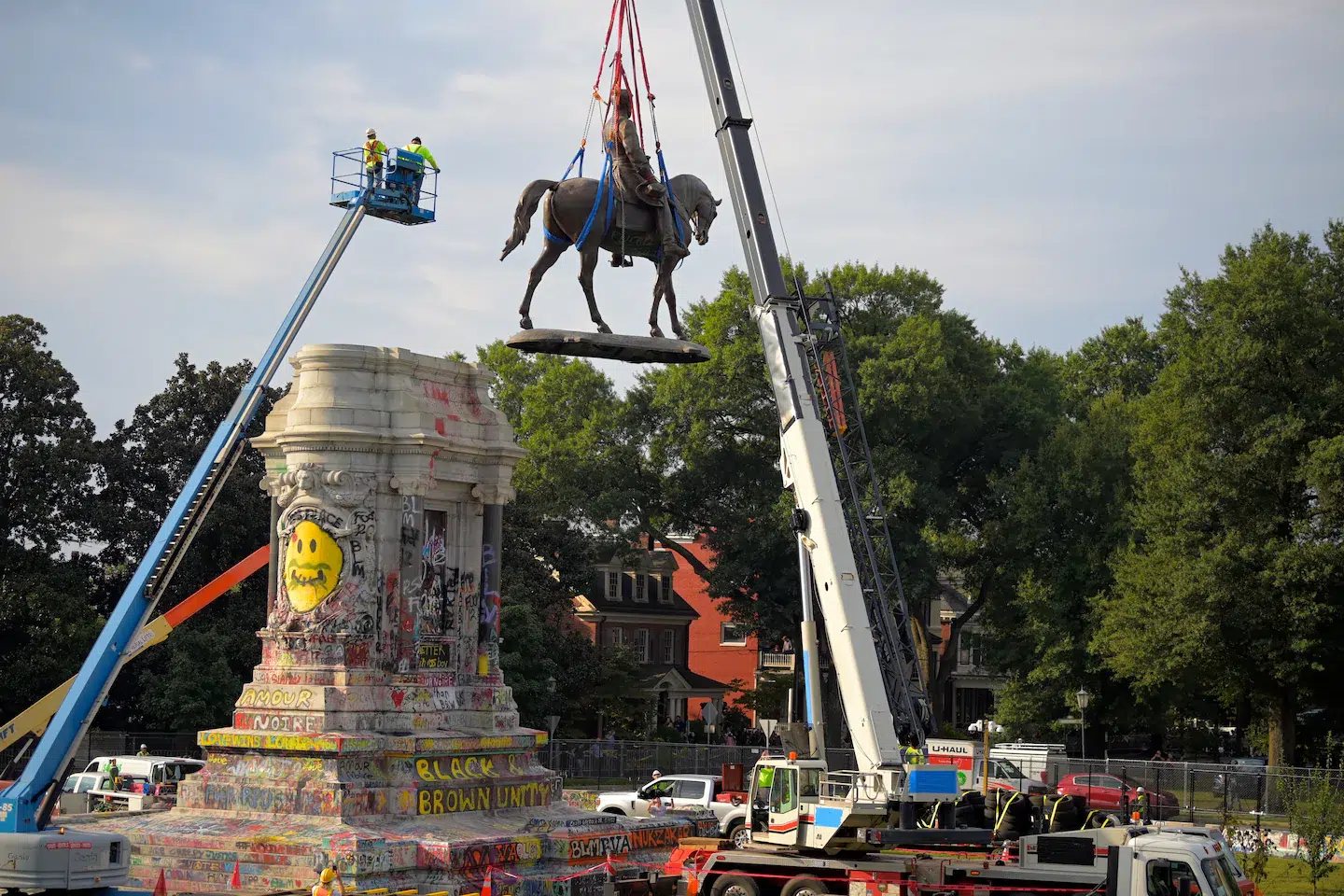Social Justice Policy Brief #183 | Inijah Quadri | November 14, 2025
Policy Issue Summary
The ongoing, contentious debate over public monuments is not a referendum on history, but a profound struggle over power, memory, and the definition of public space. For generations, city squares, parks, and government buildings have been dominated by statues celebrating figures of colonialism, slavery, and state violence—from Confederate generals and slave traders to architects of Indigenous genocide. These monuments have never been neutral historical markers. They are active political statements, erected to assert a specific, dominant narrative of power and to legitimize a social hierarchy built on white supremacy.
The mass protests for racial justice in 2020, following the murder of George Floyd, catalyzed a global reckoning. This movement, led by Black Lives Matter activists and Indigenous groups, brought new urgency to what community organizers had demanded for decades. Consequently, dozens of monuments honoring figures like Robert E. Lee, Christopher Columbus, and others were toppled, relocated, or officially removed. This represented a significant shift in public consciousness, a grassroots rejection of publicly funded symbols of oppression.
However, this progress is now facing a powerful and organized counter-offensive. The fourth edition of the Southern Poverty Law Center’s “Whose Heritage?” report, released in April 2025, notes a slowdown in removals. This is coupled with a reactionary political movement. A March 2025 executive order, “Restoring Truth and Sanity to American History,” actively seeks to halt removals and even restore toppled statues, such as the bronze of Confederate General Albert Pike. This, along with state-level laws designed to “protect” these monuments, has re-established the central conflict: public space is a battlefield, and these statues are symbols of an ideology that refuses to release its grip.
Analysis
The most common argument against monument removal is the claim that it is “erasing history.” This is a deliberate fallacy. Removing a statue does not erase history; it ceases the public veneration of a historical figure. History is not learned from bronze statues. It is preserved in books, archives, museums, and classrooms. The “history” that is truly being erased by these statues is the history of those they oppressed. A statue of a Confederate general, for example, tells one story—a false one of “heritage” and the “Lost Cause”—while actively silencing the history of the millions of enslaved people he fought to keep in bondage.
The majority of Confederate monuments were not built in the immediate aftermath of the Civil War as gestures of grief. They were erected decades later, during the height of the Jim Crow era, as a coordinated propaganda campaign. Their purpose was to terrorize Black communities and unmistakably assert the persistence of white supremacy, even in the face of legal defeat. These monuments are not history; they are artifacts of historical intimidation. To maintain them in places of honor is to co-sign that intimidation and to force Black citizens to navigate a public landscape that celebrates their ancestors’ enslavers.
This struggle is not isolated to the United States. It is a central component of a global decolonization movement. From the “Rhodes Must Fall” campaign in South Africa to the toppling of slaver Edward Colston’s statue in Bristol, England, communities across the world are demanding a re-evaluation of their commemorative landscapes. They are asking a fundamental question: who is worthy of our honor, and who has the power to decide? This process is not about destruction; it is about creation. It is about making space for new monuments that tell a fuller, more honest, and more just story—monuments to resistance, to liberation, and to the victims of the very figures currently cast in bronze. This is not an erasure of history, but a profound and necessary engagement with it, demanding a public memory that reflects collective liberation rather than selective oppression.
Engagement Resources
- Southern Poverty Law Center (SPLC) – Whose Heritage?(https://www.splcenter.org/whose-heritage) A comprehensive project that tracks public symbols of the Confederacy across the United States. It provides an interactive map, data, and reports on the history of the “Lost Cause” narrative and the status of removal campaigns.
- Monument Lab (https://monumentlab.com/) A public art and history studio that works to advance justice and equity by reimagining the future of monuments. Through participatory research, such as the National Monument Audit, and artistic commissions, it helps communities rethink public symbols and create new, inclusive forms of remembrance.
- Equal Justice Initiative (EJI) – Community Remembrance Project(https://eji.org/projects/community-remembrance-project/) This project works with communities to document the history of racial terror, memorialize its victims, and erect historical markers. It is a powerful example of creating new, truthful memorials as a corrective to the false narratives of Confederate monuments.

